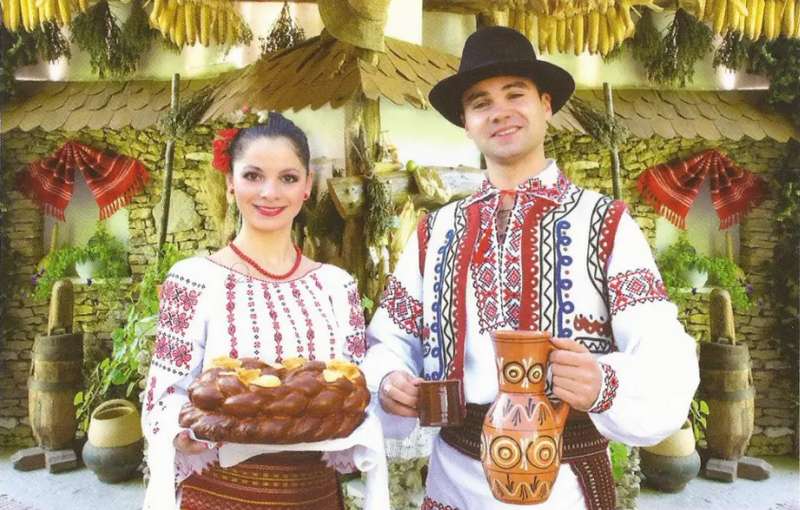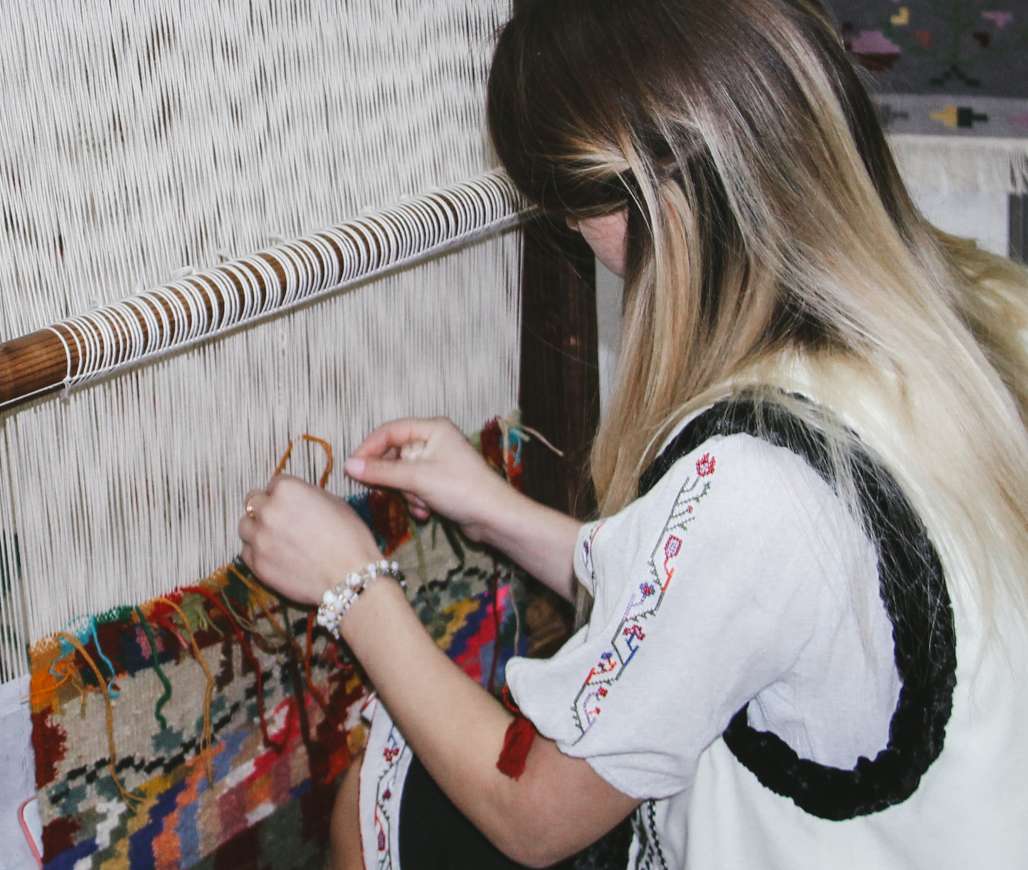The National Ornament of Moldova from Turgut Can's blog
The ornamentation of objects is an artistic reproduction, usually simplified by figurative forms of the surrounding reality (material, social, spiritual). The ornament expresses a side of the cultural specificity, of the way of conceiving and producing aesthetic values.
In popular creation, where the names of the craftsmen mostly remain unknown, the ornamental motifs have been polished and selected over the centuries and millennia, becoming a treasure and standard of collective creation.
The decor is always organically linked to the function of the objects, the raw material and the technique in which they are worked, varying in relation to the skill and social status of the creator, the historical stage of development of the society, the geographical location and the demographic structure of the population, sometimes ornaments find their expression sacred symbols that are passed down from generation to generation and are related to the ancient symbols of the people. Thus, folk ornamentation presents an ethnographic document of major importance similar to speech, music, folklore serving as a means of communication between generations.
Until now, numerous decorative forms have arrived, which testify to the understanding of beauty, their significance as "signs" with certain meanings, symbols of ancient beliefs, legends or myths, which have been enriched with multiple variants, losing the original meaning and obtaining new contents.
In the course of the development of the decorative-applied folk art of each people, various interferences occur, caused by the relations with the cohabiting and neighboring ethnic groups. In popular creation we find ornamental motifs of universal, national and local circulation.
The characteristic features form in a certain way the national style, which is the basis of the national culture of a people, in folk ornamentation, in folklore, speech, music, etc. The study of decorative motifs in Moldovan folk art can tell us about the appearance and evolution of many forms at certain historical stages.
Between the genres of artistic creation there is a certain unity, which forms the specifics of artistic thinking and culture. Here we can follow the drawing of dance movements and we will find much in common with costume ornamentation, embroidery, fabrics, wood art, ceramics, etc.
In the field of decorative and applied folk art, some particularities are well distinguished, which allows the statement that folk ornamentation depends on several factors, primarily on the raw material used and the technique of obtaining the decoration, on the function, the thematic content or the meaning of the ornamental motifs. Thus, each type of art, be it woodworking or metalworking, pottery, or embroidery, decorative weaving or choosing carpets, has specific decorative-artistic features.
 The systematization of elements, motifs, and ornamental compositions on different Moldovan folk art objects shows that they differ according to their form or style of stylization. Looking at ornaments through the semantic prism of their content, we distinguish geometric or abstracted, concrete or realistic and symbolic ornaments (mythological, religious, emblematic, etc.). Some of the ornamental motifs are common to the ornamentation of many peoples. Among these we mention: the motif that symbolizes the sun, the tree of life, water, the ram's horns, the whirlwind (the sign of the succession of the 4 seasons), etc.
The systematization of elements, motifs, and ornamental compositions on different Moldovan folk art objects shows that they differ according to their form or style of stylization. Looking at ornaments through the semantic prism of their content, we distinguish geometric or abstracted, concrete or realistic and symbolic ornaments (mythological, religious, emblematic, etc.). Some of the ornamental motifs are common to the ornamentation of many peoples. Among these we mention: the motif that symbolizes the sun, the tree of life, water, the ram's horns, the whirlwind (the sign of the succession of the 4 seasons), etc.
In Moldovan folk art there is a very rich repertoire of motifs - ornamental "signs" with a special meaning, expressed both by the importance given to folk crafts and by their frequency in different genres of art.
In the Moldavian folk ornamentation we find evidence of some ancient concepts. Examples are the motifs: solar signs, the tree of life, the image of a man, a horse, a snake, the sign of the cross, etc.
A multitude of motifs and interesting ornamental compositions offer us Moldovan fabrics and carpets, whose ornamental forms throughout history have undergone great changes, determined by external influences, urban aesthetic tastes, fashion and intense industrial development.
Fabric ornament
In the art of fabrics, as in other genres of art, a modality specific to the Moldovan national style is preserved. The ornamentation of fabrics, especially that of carpets, has its own calligraphy, an unspoken, laconic, but understandable language. Basically, in the decorative fabrics, a geometric or phytomorphic geometrized decoration predominates, depending on the fabric technique. As for the thematic content of the designs on the carpets, we can distinguish several more frequent groups: vegetable or phytomorphic, geometric motifs, the representation of man, birds, etc. From the vegetal decoration, we can see meanders of flowers, buds, leaves, branches, bouquets, vases of flowers, the tree life etc.
Quite frequent is the method of treating geometric ornaments, including vegetal ones, being subject to geometrical simplifications. The rhombus, square, triangle, rosettes, jagged, straight, dotted lines, etc. are more common. alone or combined with other elements. Zoomorphic and aviamorphic ornaments enjoy popularity: the fish, horse, ram's horns, deer, stag, crayfish, dove, peacock, rooster, etc. All these occur independently or combined with other reasons.
Among the anthropomorphic ornaments we highlight: the woman's face - the symbol of fertility, the girls' chorus, the boys' game, the palms. Often, among the motifs mentioned above, we find sketches of various objects, work tools (combs, chairs, dowry chest, ladder, fork, glasses), monograms with initials, the year of manufacture, images related to certain attributes and wedding rituals (the groom's , the bride's roll, the skirt, etc.).
A rich ornamental range of geometric and abstract motifs of different proportions is available in decorative wool and cotton fabrics intended for decorating homes. These are the walls with elms, checkered, "raised" with different motifs, geometric figures, woven in two colors, laiceras in elms, in picks and elms, towels, the ornamentation of which depends on the weaving techniques.
Wooden ornaments
 Mostly the motifs on the carpets and fabrics are repeated on the inlaid wooden objects (vases with flowers, the image of the rooster, the snake, the horse's head, the ram's horns, geometric motifs - rhombus, square, the sign of the sun, water, jagged lines, etc. a.) which are translated into the art of wood.
Mostly the motifs on the carpets and fabrics are repeated on the inlaid wooden objects (vases with flowers, the image of the rooster, the snake, the horse's head, the ram's horns, geometric motifs - rhombus, square, the sign of the sun, water, jagged lines, etc. a.) which are translated into the art of wood.
Of great artistic value are the tools and installations of the popular work technique cut and carved in wood, the pillars and beams of the houses, pillars and gates, wooden household vessels, early wooden forms for cheeses, chairs, ottomans and dowry boxes, blinds and tables etc. Folk craftsmen have successfully combined the logical sense of measure with form, with composition and indented and carved ornamental motifs.
Decorative motifs on ceramics
A great diversity of shapes and decorative motifs presents the popular ceramics: pots and dishes for storing, preparing dishes, serving the table, molds for baking cozonacs, etc. Considering the fact that there are two types of Moldovan pottery - red and black, we also distinguish its categories according to the way of ornamentation: drawing on angobe, motifs obtained by scratching, ornamentation by relief with twisted clay cords, by applying figurines on different vessels . The chromaticity of the dishes is based on a limited number of colors, which shine after glazing. A true cultural heritage presents the decor of Moldovan ceramics, their ornaments and color.
It cannot be overlooked that a large number of objects of decorative folk art, necessary in the past, have disappeared today. Today, other products have penetrated the rural communities - serial industrial ones, new objects, materials, techniques, taking their place in life according to the requirements of the time and in the environment with the new trends of technological development and fashion. It is certain that folk art, being a continuous process, goes through stages of transformation, preserving its own language through the diversity of forms and cultural expressions, which can be used at any time.
You will be able to learn more about the unique





























































The Wall